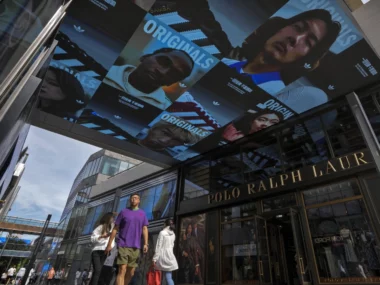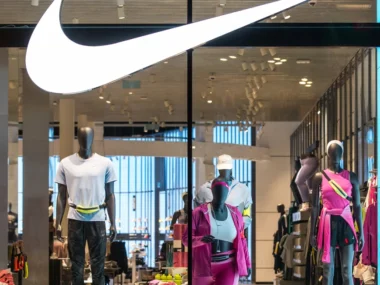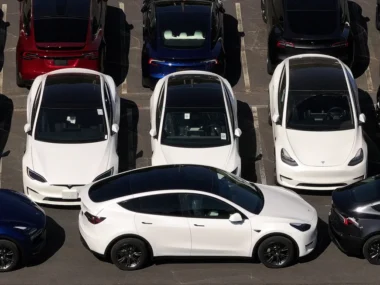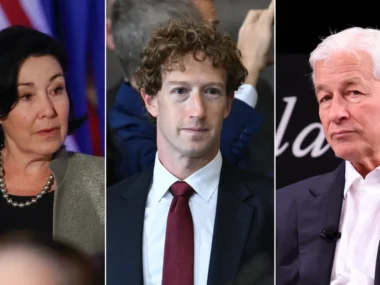A significant portion of the US economy is exhibiting signs of weakness as unemployment climbs to its highest level in over two years.
Surveys of American businesses, from restaurants to dental clinics, indicate that consumer demand has diminished this summer. This decline is also reflected in recent spending figures, contrasting sharply with last year’s robust summer spending on movies and high-profile concerts. The Institute for Supply Management’s latest monthly survey, which measures economic activity in the services sector, revealed that new orders and overall economic activity unexpectedly fell into contraction territory last month. The headline index dropped to 48.8 in June from 53.8 in May, with the new orders sub-index plummeting to 47.3 from 54.1. (A reading above 50 indicates expansion, while below 50 suggests contraction.)
If this demand slowdown persists, service-providing businesses might slow their hiring or even cut jobs. Service-providing roles account for 86% of the 158.6 million total US jobs as of June.
“Consumers are crucial to the US economy, and we’re starting to see more stress in households,” James Knightley, chief international economist at ING, told CNN.
US consumers are under pressure, facing high inflation, the highest interest rates in over two decades, depleted pandemic savings, and increasing debt. Consumer spending, which constitutes about 70% of the US economy, has already slowed in recent months, as shown by government statistics. Retailers have noticed shifts in purchasing behavior across all income levels.
A food services business surveyed by ISM reported “soft” sales and traffic compared to last year, attributing it to “high gas prices in California and constant news about inflation and restaurant menu prices.” Spending at restaurants and bars dropped 0.4% in May, according to the latest Commerce Department retail sales figures. A retail company told ISM, “With inflation continuing, will customers have enough discretionary funds to spend?”
Knightley’s analysis of government data shows that the top 20% of earners were responsible for much of the spending on services related to transportation, recreation, food, and finance, while the bottom 60% of households spent more on health care services.
However, it takes time before reduced demand affects hiring or leads to layoffs. Businesses need to determine if they’re experiencing just a bad month or quarter, Scott Hamilton, global chairman of human resource and compensation consulting at Gallagher, told CNN.
Service-providing businesses have already been hiring at a slower rate. From April through June, these firms added an average of 168,000 jobs a month, according to fresh Labor Department data, down from 241,000 jobs a month from January through March. Last year, the average monthly job gain in the services industry was 228,000. Hiring trends vary within the services sector, a significant portion of the job market.
In June, retail trade employment shrank for the first time since November, and temporary help services contracted by 48,900 jobs, dragging down the broader professional and business services super sector, which lost 17,000 workers. Health care has been a major bright spot, adding jobs steadily for decades, except for a drop in 2020 due to the Covid-19 pandemic. However, some businesses in the industry have recently noticed weakening demand.
“Demand for services has moderated after near-record patient levels last month,” a health care and social assistance firm said in the latest ISM survey.
The job market made a remarkable recovery when the broader US economy rebounded from the Covid-19 pandemic, with unemployment dropping to a 50-year low of 3.4% in 2023. However, it has recently loosened, with unemployment now at 4.1%, the highest level since November 2021, and new applications for jobless benefits trending upward. Federal Reserve officials are closely monitoring for any alarming signs of weakness in the job market as they await further evidence that inflation will continue to slow without an unexpectedly hot economy derailing it.
Tesla has now been designated as an official car for the Chinese government.
For the first time, Tesla cars have been added to a Chinese government purchase list, as reported by state-owned media outlet Paper.cn.
Tesla is the only foreign-owned electric vehicle brand on the procurement list issued by Jiangsu province’s government in eastern China. Other brands on the list include Volvo, owned by China’s Geely, and state-owned SAIC, according to my colleague Laura He. This listing allows government agencies and public organizations in the province to use Tesla cars as service vehicles, underscoring the favorable relationship between China and Elon Musk’s company.
The news has gone viral on Chinese social media, with some users questioning whether foreign cars should be used by the government. The Jiangsu government addressed these concerns by stating that the Tesla model is “a domestic car, not imported,” as reported by the state-owned National Business Daily on Thursday, citing a government employee.
Tesla, which operates a massive gigafactory in Shanghai, produced approximately 947,000 cars in China in 2023, with most of them used locally.











